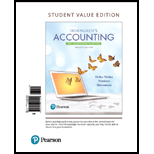
Fraud Case 23-1
Drew Castello, general manager of Sunflower Manufacturing, was frustrated. He wanted the budgeted results, and his staff was not getting then to him fast enough. Drew decided to pay a visit to the accounting office, where Jeff Hollingsworth was supposed to be working on the reports. Jeff had recently been hired to update the accounting system and speed up the reporting process.
“What's taking so long?” Drew asked. “When am I going to get the variance reports?”” Jeff sighed and attempted to explain the problem. "Some of the variances appear to be way off. We either have a serious problem in production, or there is an error in the spreadsheet. I want to recheck the spreadsheet before I distribute the report. “Drew pulled up a chair, and the two men went through the spreadsheet together, the formulas in the spreadsheet were correct and showed a large unfavorable direct labor efficiency variance. It was time for Drew and Jeff to do some investigating.
After looking at the tine records, Jeff pointed out that it was unusual that every employee in the production area recorded exactly eight hours each day in direct labor. Did they not take breaks? Was no one ever five minutes late getting back from lunch? What about clean-up time between jobs or at the end of the day?
Drew began to observe the production laborers and noticed several disturbing items. One employee was routinely late for work, but his time card always showed him clocked in on time. Another employee took 10-to 15-minute breaks every hour, averaging about \ [{1_{1/2}}\] hours each day, but still reported eight hours of direct labor each day. Yet another employee often took an extra 30 minutes for lunch, but his time card showed him clocked in on tine. No one in the production area ever reported any “down time" when they were not working on a specific job, even though they all took breaks and completed other tasks such as doing clean-up and attending department meetings.
Requirements
1. How might the observed behaviors cause an unfavorable direct labor efficiency variance?
2. How might an employee's time card show the employee on the job and working when the employee was not present?
3. Why would the employees’ activities be considered fraudulent?
Want to see the full answer?
Check out a sample textbook solution
Chapter 23 Solutions
Horngren's Accounting: The Managerial Chapters, Student Value Edition (12th Edition)
- Please Solve This Financial Accounting Question with Correct Methodarrow_forwardGeneral Accountingarrow_forwardNeed help ! Which of the following errors will not be detected by a trial balance?A. Debiting cash instead of accounts receivableB. Recording revenue twiceC. Failing to record a transactionD. A $100 debit matched with a $100 creditarrow_forward
- Financial Accounting 3.1arrow_forwardWhich of the following errors will not be detected by a trial balance?A. Debiting cash instead of accounts receivableB. Recording revenue twiceC. Failing to record a transactionD. A $100 debit matched with a $100 creditneed helparrow_forwardGeneral Accounting Question 2.5arrow_forward
- I will report your answer to Coursehero using chatgpt they block your account and will not give your payment!!! so don't answer with chatgpt. The accounting cycle begins with:A. Posting to the ledgerB. Journalizing transactionsC. Preparing the financial statementsD. Adjusting entriesarrow_forwardWhich of the following errors will not be detected by a trial balance?A. Debiting cash instead of accounts receivableB. Recording revenue twiceC. Failing to record a transactionD. A $100 debit matched with a $100 creditarrow_forwardI need help The accounting cycle begins with:A. Posting to the ledgerB. Journalizing transactionsC. Preparing the financial statementsD. Adjusting entriesarrow_forward
- Hi This Question is Simple I want Answer step by step of this Financial Accountingarrow_forwardNeed help The accounting cycle begins with:A. Posting to the ledgerB. Journalizing transactionsC. Preparing the financial statementsD. Adjusting entriesarrow_forwardNo AI The accounting cycle begins with:A. Posting to the ledgerB. Journalizing transactionsC. Preparing the financial statementsD. Adjusting entriesarrow_forward
 Survey of Accounting (Accounting I)AccountingISBN:9781305961883Author:Carl WarrenPublisher:Cengage Learning
Survey of Accounting (Accounting I)AccountingISBN:9781305961883Author:Carl WarrenPublisher:Cengage Learning
